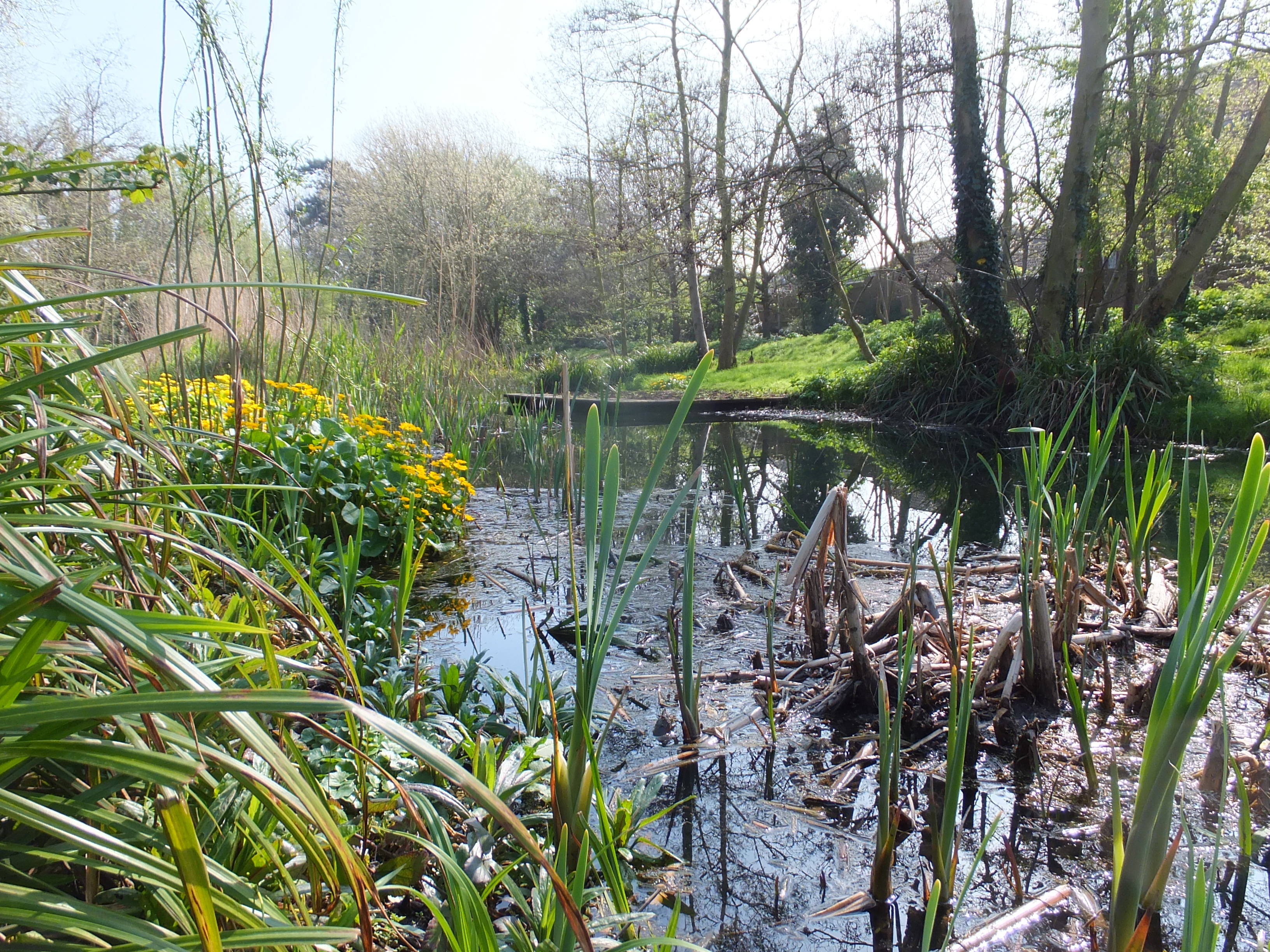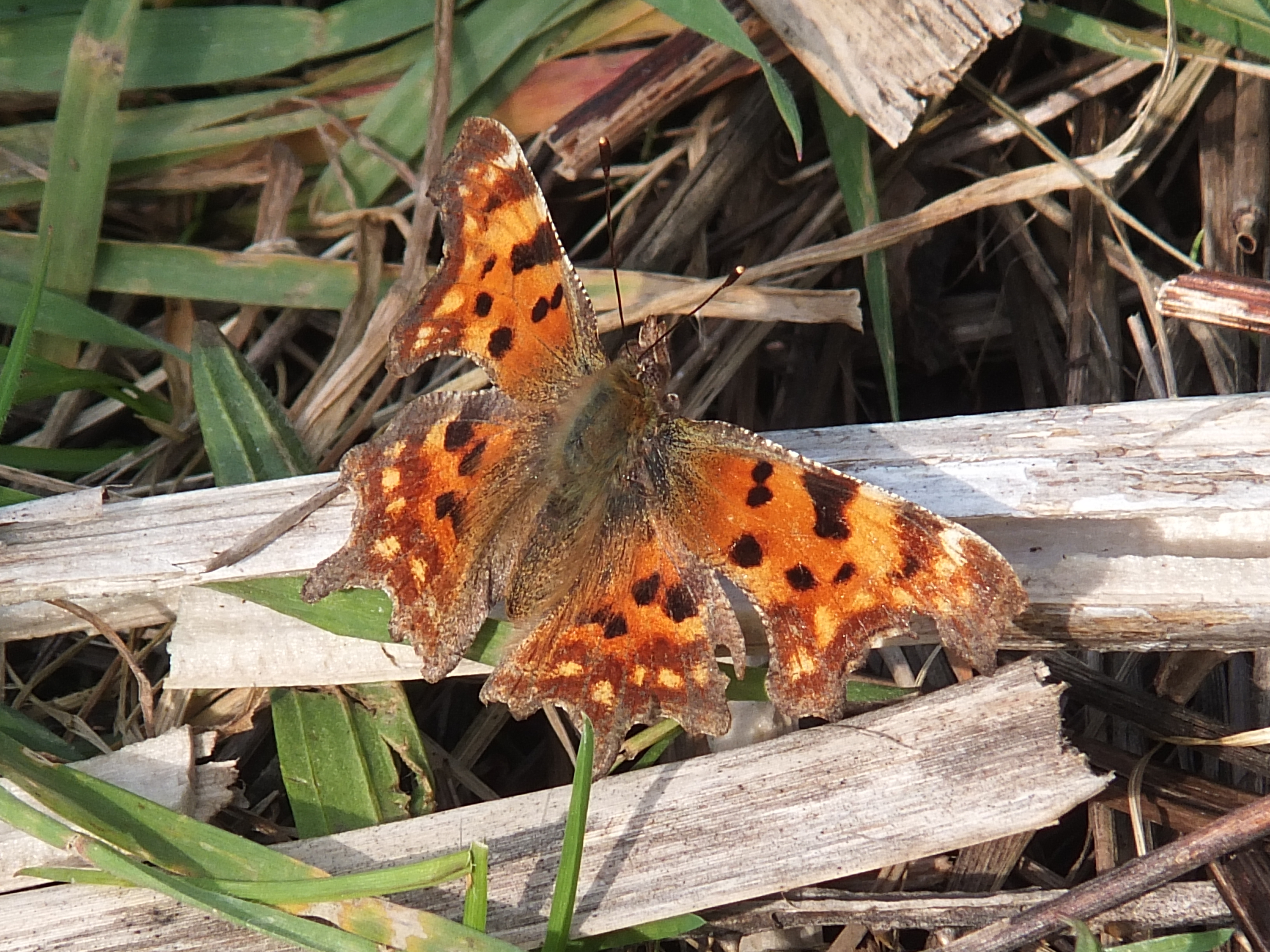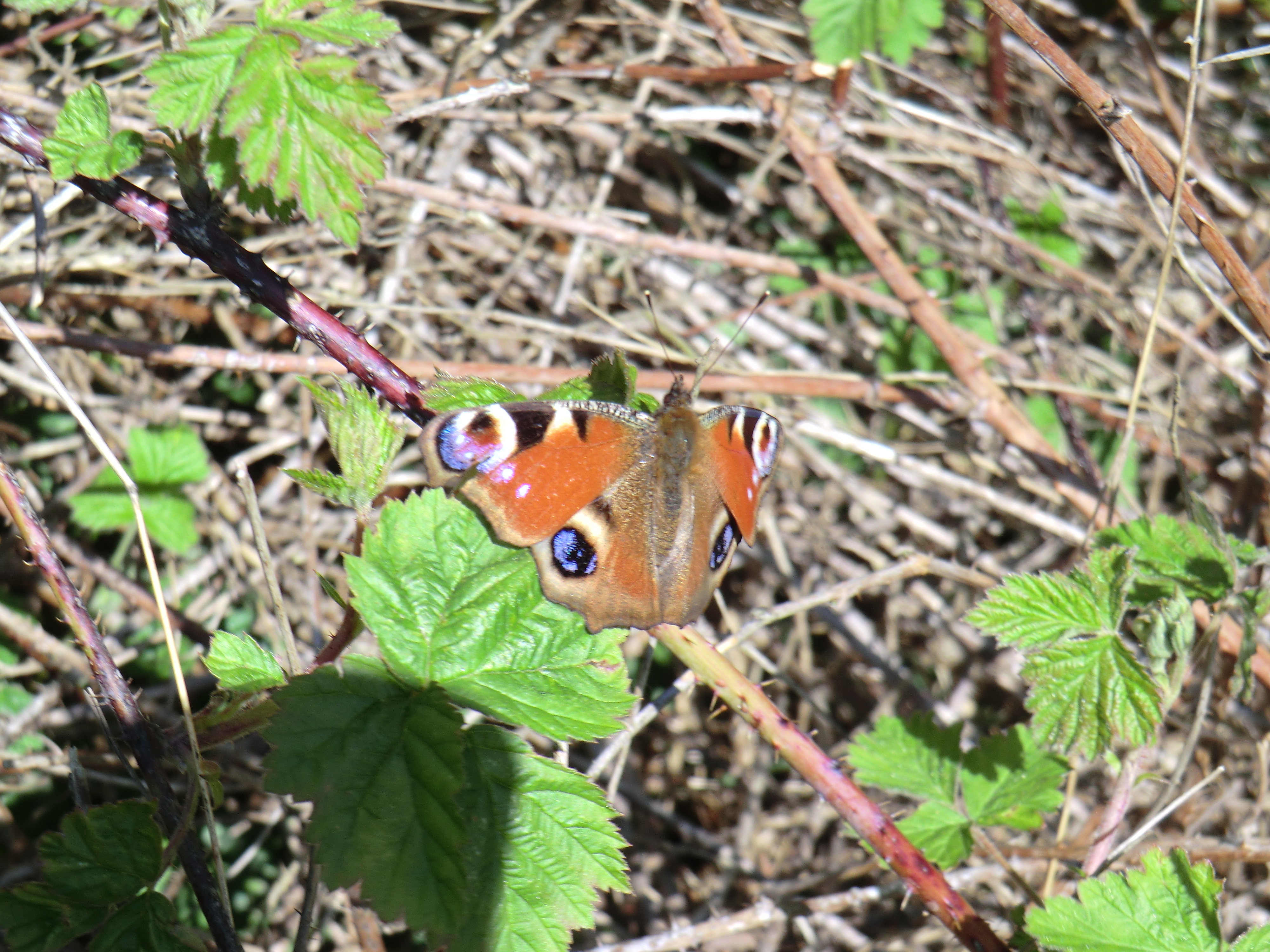On 1st April, the SNCV were off to Carew Manor Wetlands to cut back some of the overgrown grass and vegetation on the site.
Carew Manor Wetlands is a small wetlands site tucked away in Beddington Park. It’s a great place to see some really interesting wetland creatures, and volunteers managed to spot numerous frogs and toads hopping around the grassland meadow whilst they were working.
There is also an island that lies between the main pond and the River Wandle, which was the focus of the day’s task. The island has been regularly mowed over the last few years to try and remove the mass of bramble, stinging nettle (Urtica dioica) and cow parsley (Anthriscus sylvestris) dominating the area. These plants tend to out-compete other plants for light by forming a shady canopy which prevents plants with less vigorous growth from establishing.
Cutting back this overgrowth over the years has allowed plants such as campion (Silene spp.) and marsh marigold (Caltha palustris) to begin to thrive but nettles are still a dominance presence on the island. Therefore volunteers got to work mowing and raking away this unwanted vegetation in an effort to help improve the diversity of plants growing in the area.
Not all of the nettles need to be removed, however, as several butterfly species actually rely on these plants. The Comma (Polygonia c-album), Peacock (Aglais io), Red Admiral (Vanessa atalanta) and Small Tortoiseshell (Aglais urticae) all use young stinging nettles as their primary larval food source. This means that they require stinging nettles to lay their eggs on, and once these eggs hatch, the caterpillars will feed solely on these plants. In fact, volunteers did indeed spot Comma and Peacock butterflies basking in the sunshine among the nettles, at Carew Manor.
The Comma butterfly is an orange and brown butterfly with ragged wing edges, resembling a tatty Small Tortoiseshell. It gets its name from the small, white comma-like marking on the underside of its wing. The Peacock butterfly, on the other hand, is perhaps best recognised by the remarkable eye-spots on their wings. When viewed upside-down, these markings resemble an owl’s face, and as a result scare predators away.
Both these butterflies spend the majority of time in their adult form, as they are able to hibernate during the winter and emerge in spring to mate and lay their eggs. Both prefer to lay their eggs on underside of young nettles, where the eggs will remain for about two weeks until they hatch into caterpillars. Comma caterpillars have a particularly clever defense mechanism against predators, as they mimic bird droppings when curled up or motionless.
Both the Peacock and Comma are able to produce more than one brood over the spring and summer. And so, by cutting back and leaving some marginal areas of nettles, this will provide enough vegetation for butterflies to be able to reproduce over the next few months. So keep a look out!
Eleanor Kirby-Green
SNCV Biodiversity Assistant










